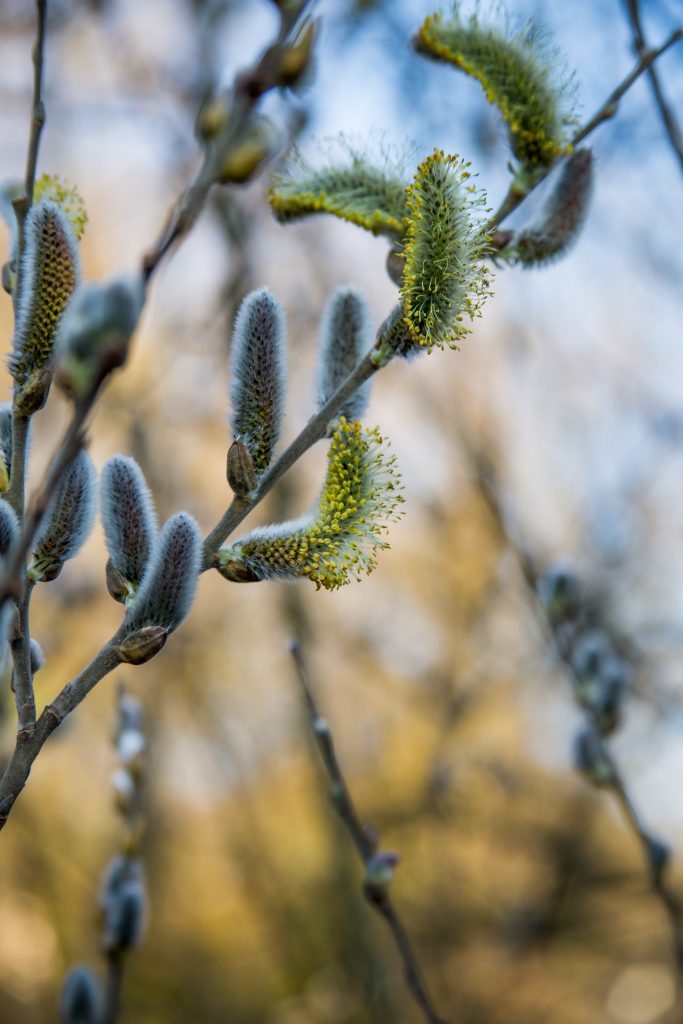Hazel tree dripping in golden male catkins in January/February; Pussy willow catkins turning yellow when ripe with pollen in March. Photo credits: Yoksel Zok and Alexander Lowe, Unsplash
Hazel trees‘ (Corylus avellana) dangling male catkins bear pollen, which is transported to tiny, red, bud-like female flower on another hazel tree by the wind. But some of the pollen is collected by early flying bees in need of a rich source of protein to feed their developing brood. However, the pollen’s not easy for them to collect and they can only gather it in small loads. This is because the pollen of wind-pollinated hazel is not sticky and each grain repels against another.
The same is true for other wind pollinated trees that produce pendulous male catkins early in the year, including Alder (Alnus glutinosa) , Aspen (Populus tremula), Black Poplar (Poplus nigra), White Poplar (Poplus alba) and later in the spring, Silver Birch and White Willow (Salix alba). Most of these trees are too big for an average garden and better for parks, streets and along river banks.
Goat Willow (Salix caprea) has silver, furry male catkins the look like a cat’s paws, hence it’s commonly known as pussy willow. Goat willow is dioecious, meaning male and female flowers grow on separate trees. In March, the male grey catkins become yellow when ripe with pollen and are immensely popular with bees. If you want to grow one in a small garden, try Salix caprea ‘Kilmarnock’, or ‘Kilmarnock willow’ a small, compact variety that reaches around 2m high and spreads up to 1.5m. It forms a weeping ‘umbrella’ of branches which are smothered in fuzzy silver catkins from late winter to early spring on bare twigs. Rounded mid-green leaves appear after the catkins.
Garrys elliptica (also known as the Silk tassel bush) is a small tree, or evergreen bush, native to north America, that from December to February is covered in a profusion of long attractive grey-green catkins, or tassels, which can be up to an incredible 35cm long. Again, it’s wind pollinated but will be visited by hungry winter-flying bees.


